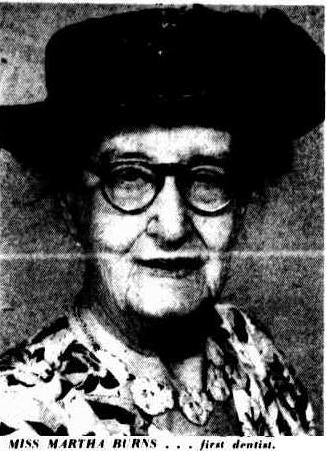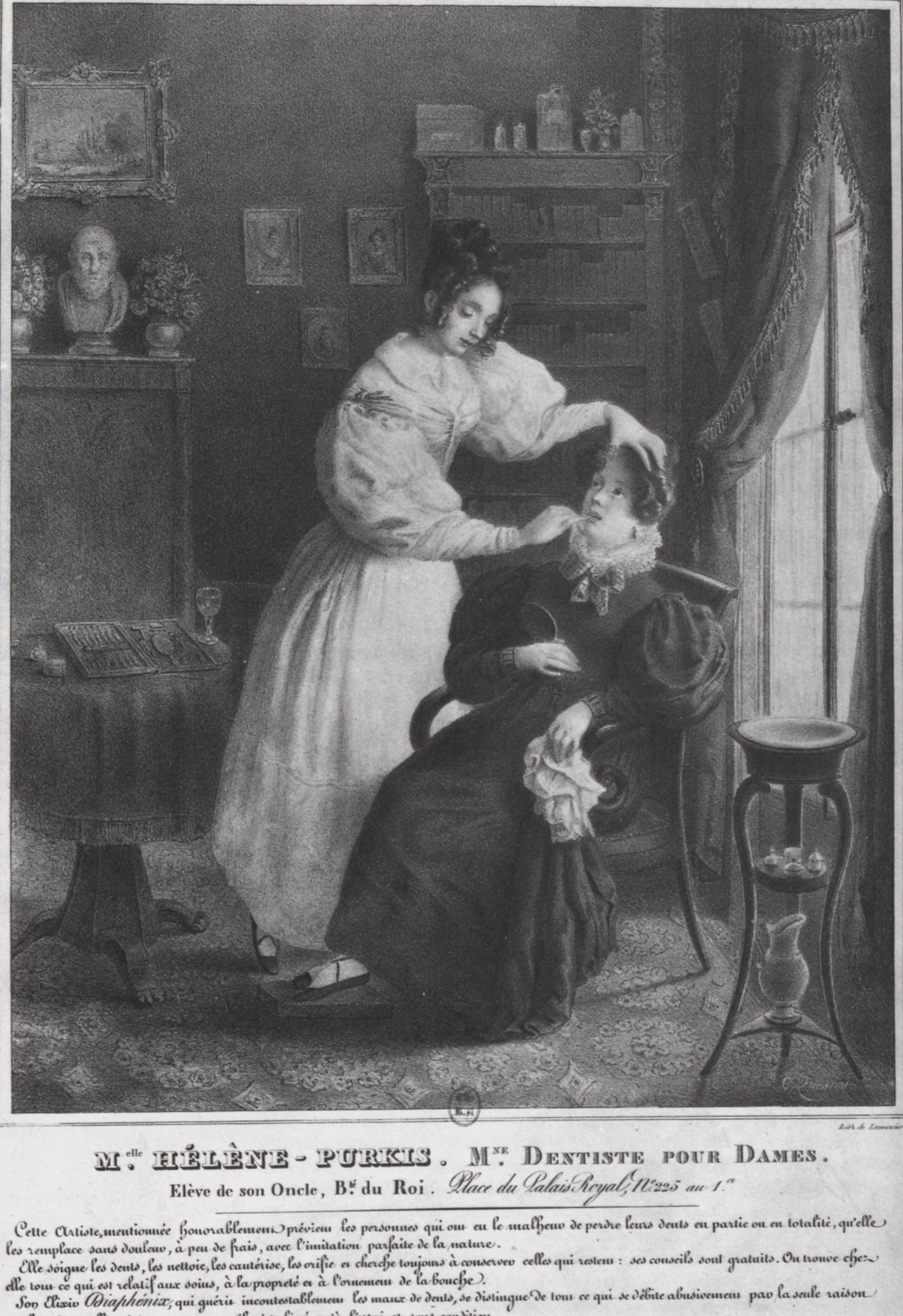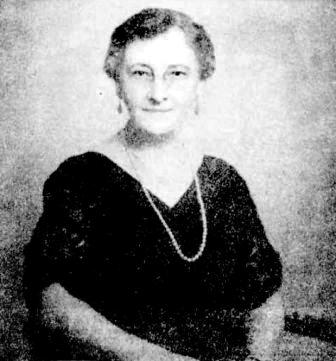Building bridges: gender diversity in XIX-XX dentistry
“We’d both be building bridges...”
This is how, at the turn of the XX century, Martha Burns convinced her father, an engineer, to let her apprentice in dentistry.
Martha is one of the first female dentists in Queensland. In that simple and candid sentence, she sums up how little sense resistance against women in [traditionally male-only] professions really made, and shows an early understanding that the ‘rise’ of women has never been about the ‘fall’ of men. Rather, it’s about removing and challenging barriers to anyone’s dreams and professional inclinations.

Martha Burns pictured in a Courier-Mail article celebrating her achievements (Brisbane, Qld. : 1933 - 1954), Wednesday 5 May 1954, page 14
As recently as the 1980s, women laboured against the tide and tried to fit the patriarchal structures if they wanted to succeed: ‘act like a man’, they were told. Today, gender roles in Australian society are increasingly fluid and attitudes have changed.
Undoubtedly, this is thanks to early pioneers like Martha, who first challenged the status quo in dentistry: generations of dental professionals and patients now benefit from a more inclusive practice because of their courage.
It is also thanks to the men who supported them, raising above gender-stereotypical behaviour. Supportive colleagues, fathers and husbands, who also rose above societal demands, worked alongside their wives and daughters, and helped them thrive. Or rather, if we must be truthful about the limitations of social constraints of the time allowed them to thrive.
For Myra Rendle McKenzie, probably the first woman to register as a dentist in Queensland (1899), the support of her father was also paramount. Richard Rendle was a respected physician; he was convinced his daughter was of ‘above average mental capacity’ and accepted her wishes to pursue a career.
This year’s International Women’s Day theme #ChooseToChallenge reminded us all that only from challenges comes change. Gender parity does not progress if people don’t call out stereotypes and bias.
There is a lot at stake: research is showing that from a socio-economic point of view, women in leadership seem to create more productive economies, and healthier and more peaceful societies.
Here we look at how female dentists established themselves in this particular professional space, and learn about the first Australian woman to graduate in dentistry.
Dentists for ladies
When dentistry shaped itself as a new professional field (XIX century), very few Western women provided dental treatment, apart from perhaps aiding a male practitioner. If they did, they would only limit themselves to treating children and other women.
They offered mostly cosmetic work or herbal concoctions to cure toothaches.
For example, this 1880 image is an advertisement for Frenchwoman Helene Purkis: she defines herself a ‘dentist for ladies’. Her specialty is apparently an elixir called Diaphenix, possibly an herbal concoction to cure toothache. It is visible on the table behind her, next to her tools:

Image reproduced from Malvin Rings Dentistry, an illustrated history (New York: Abrams, 1985), image 250, page 269. Image measures 25 x 17 cm. Bibliotheque Nationale, Paris. https://doi.org/10.6083/M4NK3CKW. CC4
Her advertisement tells us that she did all kinds of dentistry and offered free consultations to fashionable women in the first arrondissement.
The 1901 Australian census shows 17 female dentists out of a total of 209 dentists.
Fast forward to today, the number of women entering the dental profession has been increasing and in Queensland there are now more female dentists than male counterparts.
Despite this, women are still under-represented in leadership roles in major dental organisations, academia and journal boards (Silva and Teoh, 2020. Each for Equal: Gender inequity in dentistry in Australia).
This may be due to persisting socio-economic barriers and cultural bias that continue to hinder women’s careers, particularly in professional fields and scientific research (Albino et al, 2019, cited in Silva and Teoh).
In his 1939 book, The Story of Dentistry (chapter 34), MDK Bremner described some of the deeply ingrained prejudices about women’s supposed inferiority, as they applied to the dentistry field. We recognise them, albeit fortunately in a milder form, in 2021.
The most persisting bias is the perceived lack of physical prowess, at a time when a dentist’s skill and reputation was linked to the ability to extract an entire tooth.
“The very form and structure of a woman unfits her for its duties: an all-wise providence did not fit woman for the great physical effort which the practice of dentistry requires”, commented a Dr George T Barker in the journal Dental Times, July 1865.
A famous 1879 Punch cartoon by George du Maurier is indeed captioned: Female dentistry: ‘It’s nearly out; but my wrist is so tired that I must really rest a bit: a young woman blushes and apologises to a distraught male patient". At the time, the Punch often targeted women who were determined to enter male-only professions.
Apart from being too feeble — of body and mind — women were deemed not enough ‘mechanically’ inclined and tech impaired. Hence the surprise when Annie Praed, the first woman to graduate as dentist in Australia, actually produced a clever paper on how to build an electric furnace (1907). Read about this further below.
Lastly, social prejudices prevented most men, and many women themselves, from trusting a female with medical care. This resulted in decades of unfair competition with male practitioners. The only exception: paediatric dentistry.
Many women dentists resorted to concentrating their efforts on a patient pool of children, elderly and women, in line with the expectations of the female gender as provider of ‘gentle care". This tendency in professional choices persists to this day in the specialisation choices of many women, in Australia and many other countries.
Initially, newly established dental schools in Australia did not accept enrolments from women. Even when they did eventually, many girls couldn’t access the same technical or science subjects in high school as their male counterparts, so started off in marked disadvantage (Comino-Cerny, 2000).
Once qualified to practice, these ground-breakers had to fend for themselves in a society where traditionalists among their own gender criticised them heavily. On which grounds? Depending on the social and historical flavour of the day: not doing their duty to populate the country, not being there for their husbands or children, not being feminine or masculine enough, and stealing jobs from more capable men.
Many decades later, women often still fight against the self-perpetuated dogma of working twice as hard to satisfy everyone's expectations. In dentistry as in many other fields, many women still feel they must reach some super advanced level -- at a game with rules set a long time ago, when they weren’t invited to play in the first place.
Sources:
Comino-Cerny, Z.J. 2000. Margaret Estelle Barnes And Annie Praed - Australia'S First Women Graduates In Dentistry: Twentieth Century Femininity And Professionalism In Dentistry, The University of Sydney.
Annie Praed: first Australian woman graduate in dentistry
Annie Praed (1873-1948) BDS Sydney 1906, is Australia’s first woman to graduate in dental school. She also helped found the NSW branch of the Australian Dental Association.

Annie Praed in 1937. National Library of Australia.CC4
As it would be expected at the time, Praed's patients were mainly children, servants and friends, with the ‘occasional brave male patient’ (Comino-Cerny).
In February 1912, she attended the first Australian dental congress in Sydney. In front of what must have been an intimidating public, Anne presented a paper on How to make an electric furnace at home.
In the congress proceedings, Dr Hinder, chairing the discussion after her presentation, is reported to have exclaimed: “And a woman, mind you!”. He mentions he’s glad to have convinced Anne to present the paper and can attest to her expertise as he practices in the same building. To a modern ear, it sounds as if he felt the need to provide his own endorsement for her benefit, to address what could have been a typical reaction in the room: why is this lady talking to us about technical stuff?
In fact, another comment recorded in the proceedings gives voice to the male colleagues' confusion as to whether they should be more shocked a lady is presenting, or that the lady shows sound mechanical knowledge: “It is very pleasing to know that we have a lady amongst us able to give us such complete and accurate information. Miss Praed has proved the fallacy of the popular notion that ladies have no mechanical turn of mind".
Sources:
Australian Dental Congress Proceedings, 1912. ADAQ Archives.
Musgrave, D. 1968, 'The history of the pioneering women in dentistry', Apollonia, vol. 5, no. 1,https://wmoa.com.au/herstory2017/woman/praed-annie
Watson, A. O., 'Praed, Annie (1873-1948)', in Australian Dictionary of Biography, National Centre of Biography, Australian National University. http://www.adb.online.anu.edu.au/biogs/A110281b.htm.
Comino-Cerny, Z.J. 2000. Margaret Estelle Barnes And Annie Praed - Australia'S First Women Graduates In Dentistry: Twentieth Century Femininity And Professionalism In Dentistry, The University of Sydney.